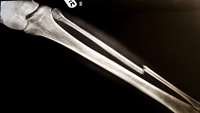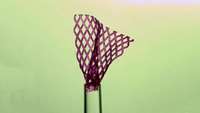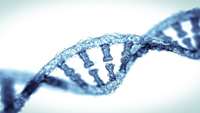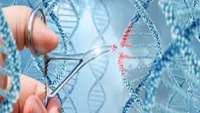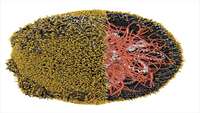How do broken bones heal?
A fall, followed by a crack - many people are no stranger to this. Broken bones are painful, but the majority heal very well. The secret lies in stem cells and bones natural ability to renew itself.
Stem Cell Therapy Selectively Targets and Kills Cancerous Tissue
Researchers have created a method to kill cancerous tissue without causing the harmful side effects of chemotherapy.
President Rouhani Appointed Dr Sorena Sattari as Vice-President for Science and Technology
According to Article 124 of the Constitution of the Islamic Republic of Iran and based on your commitment and experience, you are being appointed as "Vice-President for Science and Technology".
Injectable tissue patch could help repair damaged organs
Repairing heart tissue destroyed by a heart attack or medical condition with regenerative cells or tissues usually requires invasive open-heart surgery. But now biomedical engineering Professor Milica Radisic and her colleagues have developed a technique that lets them use a small needle to inject a repair patch, without the need to open up the chest cavity.
Stem Cell Therapy for Heart Failure Gets a Gold-Standard Trial
In the days after a heart attack, surviving patients and their loved ones can breathe a sigh of relief that the immediate danger is over—but the scar tissue that forms during the long healing process can inflict lasting damage. Too often it restricts the hearts ability to fill properly between beats, disrupting rhythm and ultimately leading to heart failure. Yet a new possible treatment may help to revitalize an injured ticker.
Hair growth stimulated using stem cells
Lei and team used skin organoids derived from both newborn and adult skin cells. Specifically, they used progenitor cells, which are a type of cell that is more differentiated than stem cells. They dissociated these from newborn and adult skin and then transplanted them into nude mice.
Gene editing technique could treat ALS and Huntingtons disease
The most common gene editing technique, CRISPR-Cas9, only modifies DNA. Thats helpful in most cases, but it means that you cant use it to tackle RNA-based diseases.
Cellectis Granted Patent for CRISPR Use in T-Cells
July 24, 2017 – New York (N.Y.) – Cellectis (Alternext: ALCLS; Nasdaq: CLLS), a clinical-stage biopharmaceutical company focused on developing immunotherapies based on gene-edited CAR T-cells (U CART), today announced the grant by the European Patent Office of patent No. EP3004337 for the invention of using RNA-guided endonucleases, such as Cas9 or Cpf1 for the genetic engineering of T-cells. The patent will be issued on August 2, 2017.
Scientists are Getting Closer To Using Pig Organs For Human Transplants
In a scientific first, researchers have created piglets that could possibly one day provide organs for human transplants. Though the science is still early, its a big step forward in the quest to use pig organs to help the hundreds of thousands of people every year who await organ transplants.
Nanoparticles Create Effective CAR T Cells in Living Mice
Researchers have developed a method to genetically engineer cancer-fighting immune cells in living animals using nanoparticles that carry DNA. The new study shows that the resulting immune cells, known as CAR T cells, eliminated leukemia in mice.


